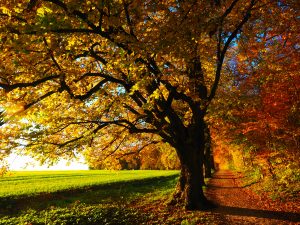Planting trees to your yard takes careful consideration–after all, most grow to be HUGE!
Having a garden full of thriving tree life is a major part of many people’s dream homes. Trees are vital organs of mother nature, breathing life into the world around them. They give a garden character, enhance its beauty, and have a positive impact on the environment.
Unfortunately, most people don’t see their dream home realized, particularly when it comes to trees. The idea of planting one, never mind several, can be daunting. You need the space, quality of soil, and knowledge to plant and maintain a tree. However, the reality is that growing and maintaining them is relatively easy. As long as you choose the right type and give it the minimum amount of attention, the process is straightforward.
Whether you want to plant one statement tree in your small backyard or you’re aiming to grow an orchard, here are five great tips for adding them to your garden.
5 Tips Why You Should Consider Planting Trees in Your Yard

1 – Start by planting the right tree
Choosing the trees that you plant should not be a quick or impulsive decision. You should spend some time deciding what exactly you want from it.
Consider the height, circumference, type, life expectancy, climate suitability, and maintenance requirements.
If you want to grow fruit, research what it takes to grow and maintain your planting efforts. It may need pollination. Fruit or berry trees attract birds so you should also take into consideration whether or not you want lots of birds nesting nearby.
2 – Consult your neighbors before planting trees
There have been countless neighborly feuds that started from the planting of a tree. Although your tree may start small, it can grow tremendously and have a significant impact on your neighbor’s home.
Large species can block views, restrict light, and blow leaves into your neighbor’s space. This can be deemed disrespectful and unfair if you haven’t consulted them beforehand.
Consult those who live nearby about your plans and consider their perspective before going ahead with planting. Otherwise, you may end up in a nasty dispute.
3 – The tree planting process
The planting process is critical when it comes to growing trees. The most crucial aspect is placing it at the correct depth. The top meter of soil provides the roots with the ideal mixture of oxygen and water. The planting hole should be dug squarely, and the soil needs to be loose for optimal growth.
If you’re planting in a pot, ensure that the size of the pot matches the current size of the species. The pot should be replaced as the tree gets bigger. A potted tree can be switched into the ground if it gets too big.
4 – Maintenance of trees
Research the maintenance requirement for your species and tend to it carefully. Watering, weeding, mulching, feeding, and pruning are all standard parts of the maintenance process.
You should also note the importance of leaf blowing in fall and winter. This is essential to keep your garden tidy, but also to rid your garden of excess moisture.
5 – Protection
Most trees are susceptible to damage, mainly from weather conditions. To protect your plant from freezing, cover them with burlap, sheets, or tarp. Relocate potted trees for protection. Create a shelter or windbreaker if there’s high wind. In times of drought, ensure that you water your trees.

